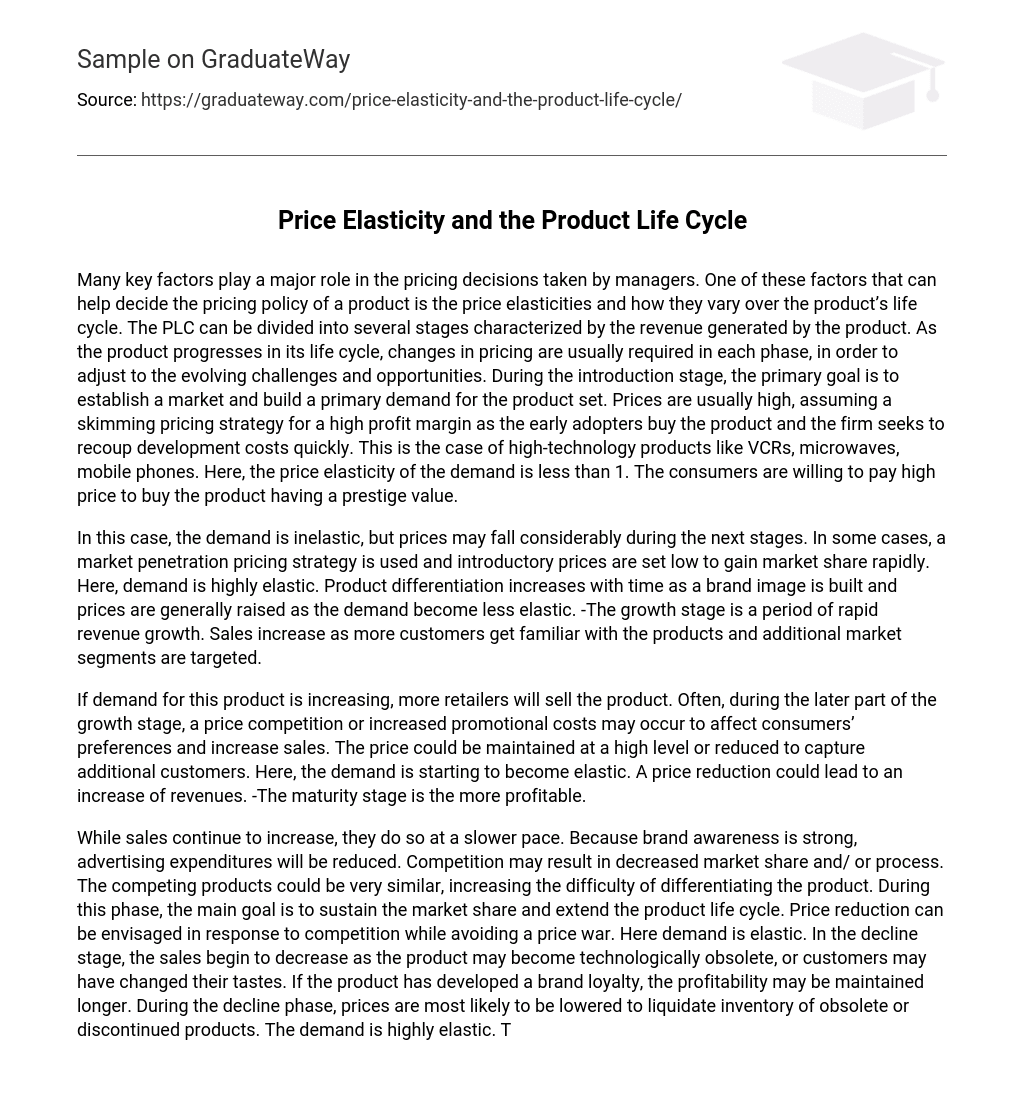Many key factors play a major role in the pricing decisions taken by managers. One of these factors that can help decide the pricing policy of a product is the price elasticities and how they vary over the product’s life cycle. The PLC can be divided into several stages characterized by the revenue generated by the product. As the product progresses in its life cycle, changes in pricing are usually required in each phase, in order to adjust to the evolving challenges and opportunities. During the introduction stage, the primary goal is to establish a market and build a primary demand for the product set. Prices are usually high, assuming a skimming pricing strategy for a high profit margin as the early adopters buy the product and the firm seeks to recoup development costs quickly. This is the case of high-technology products like VCRs, microwaves, mobile phones. Here, the price elasticity of the demand is less than 1. The consumers are willing to pay high price to buy the product having a prestige value.
In this case, the demand is inelastic, but prices may fall considerably during the next stages. In some cases, a market penetration pricing strategy is used and introductory prices are set low to gain market share rapidly. Here, demand is highly elastic. Product differentiation increases with time as a brand image is built and prices are generally raised as the demand become less elastic. -The growth stage is a period of rapid revenue growth. Sales increase as more customers get familiar with the products and additional market segments are targeted.
If demand for this product is increasing, more retailers will sell the product. Often, during the later part of the growth stage, a price competition or increased promotional costs may occur to affect consumers’ preferences and increase sales. The price could be maintained at a high level or reduced to capture additional customers. Here, the demand is starting to become elastic. A price reduction could lead to an increase of revenues. -The maturity stage is the more profitable.
While sales continue to increase, they do so at a slower pace. Because brand awareness is strong, advertising expenditures will be reduced. Competition may result in decreased market share and/ or process. The competing products could be very similar, increasing the difficulty of differentiating the product. During this phase, the main goal is to sustain the market share and extend the product life cycle. Price reduction can be envisaged in response to competition while avoiding a price war. Here demand is elastic. In the decline stage, the sales begin to decrease as the product may become technologically obsolete, or customers may have changed their tastes. If the product has developed a brand loyalty, the profitability may be maintained longer. During the decline phase, prices are most likely to be lowered to liquidate inventory of obsolete or discontinued products. The demand is highly elastic. The customers become very sensitive to price changes. Thus the firm should consider minimizing prices in order to increase demand or at least maintain a certain level of sales.
In the contrary, in a niche market, prices could be maintained for continued products. All in all, firms will adopt different pricing policies for a product at different stages of its life cycle. Price elasticity tends to decrease during the first three stages. In the introductory phase of a new product, price sensitivity is high and demand is elastic, but low for high-tech product. As the brand progress over time, the market become saturated and substitutes increase, so the price sensitivity will increase as well, and the demand becomes more and more elastic.





